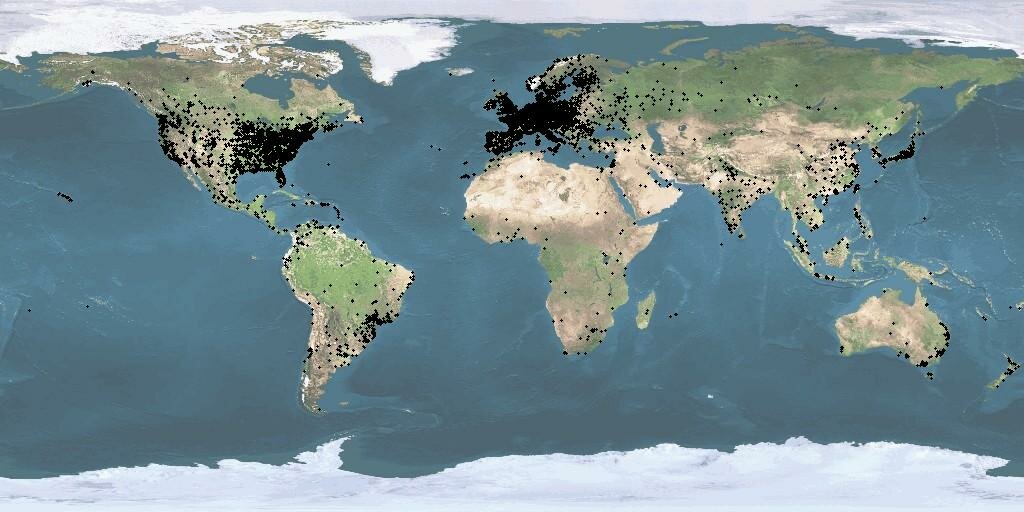(Show/Hide)
The next cure for a major disease is as likely to be discovered on a computer as on a laboratory bench—and scientists are enlisting ordinary citizens to volunteer to help crunch the data.
Advances in computer science have enabled medical researchers to test how proteins fold, genes interact and pandemics spread in complex digital simulations of natural environments. As these simulations become more intensive and widely used, however, computers at academic institutions and other research facilities can't keep up with the demand for medical processing power.
View Full Image
VOLUNTEER1
Agence France-Presse/Getty Images
Indian border security guards, who regularly contract malaria, are required to carry repellents and masks.
VOLUNTEER1
VOLUNTEER1
Instead, scientists are tapping into a vast network that allows the research to be parceled out in tiny workloads that can be performed on anyone's household computer when it's not otherwise being used. So far, hundreds of thousands of people in countries around the world have volunteered their computers' processing power to help advance the cause of medical research.
Here's how it works: Volunteers download an application onto their home computer that links them into a network that includes other citizen volunteers and research scientists. The network assigns each computer a small bit of a project's puzzle to solve. The process, which continues as long as the computer is turned on but idle, typically takes several hours, but can vary depending on the project and the individual computer's power. When complete, the results are automatically sent back to the network's server.
In 2003, epidemiology researcher Nicolas Maire and his colleagues at the Swiss Tropical Institute in Basel began simulating how potential malaria vaccines would affect populations where the disease is most prevalent. They ran the program on a network of several dozen of their institute's computers. But as the research team graduated to the second phase of their project in 2006, adding more variables, complex interactions and data to their model, it became clear that they needed more processing power.
The new simulations could take months or years to complete on their network, and other local computing facilities had long waits or were too expensive, the team concluded. Instead they bet that, given the project's humanitarian appeal, they could recruit volunteers to crunch the data. The wager paid off: Today, nearly 35,000 users run malariacontrol.net's calculations while their computers are idle, allowing the team to complete simulations far more quickly than would otherwise have been possible. Some of the research group's findings, based on its network of home-computer users in the U.S., Europe, South America, Australia and elsewhere, have been reported in leading journals like Parasitology and Malaria Journal.
Volunteer computing, as it's known, dates back to 1996, when a group of researchers enlisted participants in a search for ever-larger prime numbers, an effort that continues to break world records. Several years later, volunteers flocked to SETI@home, a project to sift through the static in radio telescope data for signs of extraterrestrial life.
View Full Image
VOLUNTEER2
Getty Images
In Myanmar, medicine is distributed to control malaria, a disease that is easy to treat but remains one of the nation's biggest killers. The government's health-care spending is the lowest world-wide
VOLUNTEER2
VOLUNTEER2
In the last five years, biomedical researchers have caught on to the possibilities of volunteer computing, and so too have the volunteers. James Whitus, who describes himself as "just an average Joe helping out," had been contributing his home computer's processing power to SETI@home until late 2004. Then he heard about the World Community Grid, a not-for-profit IBM project that provides research support to a number of different medical and humanitarian studies.
"I figured why search for extraterrestrials when you can help with research?" Mr. Whitus says. "Something that could actually make a difference here on this planet."
Today, the 28-year-old car inspector in Lafayette, Ind., and his fiancee support the grid's projects—which range from cancer-drug research to improving crop yields in developing countries—on their two desktop computers and on an old laptop that they devote solely to the cause.
Such volunteer computing projects are generally based on open-source software called the Berkeley Open Infrastructure of Network Computing, or Boinc. Volunteers download the simple application from boinc.berkeley.edu, and sign up for the projects they want to support. (Not all projects have lofty goals: One searches for the Sudoku puzzle with the fewest initial entries.)
Security Risks
An open network of so many computers might seem a security risk, and it is. But David Anderson, the Berkeley scientist who founded Boinc in 2004, says he has taken two key precautions. The first uses a system of digital signatures so that hackers cannot hijack an existing project's network. The second cordons off, or "sandboxes," all Boinc activity from the rest of a host computer, so that even if a bug or malicious code did slip into a project, it would cause minimal damage.
Still, volunteers should learn more about projects before joining them, Dr. Anderson suggests. Several sites, including Boinc's official page, host message boards where volunteers can discuss projects. After five years and more than 300,000,000 tasks performed by volunteers' computers, "there have been zero security incidents," according to Dr. Anderson.
There's also the cost to volunteers, in a higher energy bill, from keeping a computer running at all times. According to an estimate on Boinc's community-edited Web page (from the Boinc home page, search Heat and Energy Considerations), running Boinc costs about $3 a month more than leaving a computer on but idle, and about $8.80 a month more than leaving it off all the time, based on typical U.S. energy costs. The typical cost in Europe is about 200% higher, the site says.
Helping Out
See some biomedical research projects enlisting volunteer computers at boinc.berkeley.edu.
Downloading, setting up and running Boinc is no more difficult than for most other software, although it lacks the polished interface and technical support of many higher-end applications. Users with older computers should be prepared for certain frustrations, as one reporter learned by trial. A few projects refused to send any work to this volunteer's 2004 mid-range laptop, for lack of computing power. What parcels of work that were received took up to 18 hours of idle time to complete. (System requirements for individual projects are usually available on their Web sites.) After upgrading to a newer laptop, work parcels flowed where they had previously been blocked, and each took closer to four hours to complete.
Advances in personal-computer and Internet speeds have helped to triple the combined power of the volunteer computing efforts over the past two years, according to data from the site boincstats.com. Today the approximately 60 projects using Boinc harness in total about 2,500 teraflops—or twice the operations per second of the world's most powerful computer—from four million computers owned by nearly two million users. About 20 of those projects are related to medical research, to which more than 300,000 volunteers contribute. That includes the various efforts that comprise the World Community Grid.
Any scientist with the skills to set up a server can become part of the Boinc network. Researchers in most cases must pay for the servers that dispatch, gather and analyze the volunteers' data. But those costs are a small fraction of the roughly $1 million a year it costs to run a low-end supercomputer. (IBM's World Community Grid is free of cost to researchers, but the projects must be approved by an external advisory board.)
The top-supported biomedical project on Boinc is Rosetta@home, which simulates how proteins fold and could lead to novel treatments for a range of diseases. The sequence of the amino acids that comprise a protein—what may look like a whirling, intertwined, chaotic mess—precisely determines its structure and biological function. But exactly how these proteins bend along each amino acid is a vastly complex problem, one that the project's 80,000 volunteered computers help to solve by testing various permutations looking, essentially, for the most stable structure.
Don't Exist in Nature
The findings allow the Rosetta lab, run by David Baker at the University of Washington, to design proteins that don't exist in nature. Some new proteins could deactivate viruses such as the flu—as Dr. Baker's lab is trying to do for this year's H1N1 strain—by attaching to and smothering the sections of the pathogens that harm human cells. The project's biggest breakthroughs in the last couple of years have been in creating catalysts, which selectively speed up chemical reactions and which regulate almost every biological process, Dr. Baker said. One catalyst in development, for instance, is an enzyme that could slice apart genes in female mosquitoes, potentially preventing malaria transmission without using toxic chemicals.
Scientific studies that make use of the Boinc network have shown some promise, but no breakthroughs, researchers say. Findings from Rosetta@home have been published in the journals Science and Nature. But "what we haven't done yet is create enzymes that cure diseases," Dr. Baker said.
Similarly, projects associated with World Community Grid have generated dozens of research papers published in highly regarded journals. But, said Joseph Jasinski, an IBM engineer who works closely with the projects: "Have we discovered a new drug for curing AIDS? No. But we've found some great candidates."








